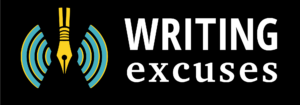People often think of first person POV as the most intimate voice. But in a way, we think second person might be more intimate. With second person, you’re forcing the reader’s subjectivity into the fiction itself. You are integrating the person who is reading the story into the experience of being in the story–…
Fifteen minutes long, because you're in a hurry, and we're not that smart.

